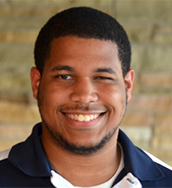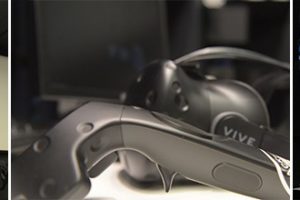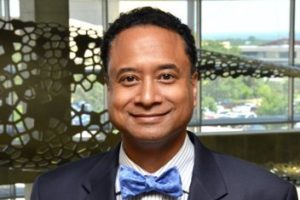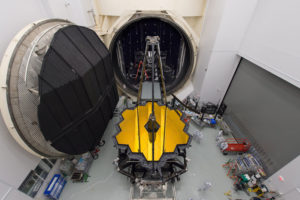A ‘GEM’ of an engineering experience

One thing about Matt McFarlane: He’s always known where he’s going.
McFarlane was in elementary school when he decided he wanted to be an engineer. Now the Seattle native is nearing completion of his master’s degree at the University of Kansas School of Engineering, and he’s looking ahead to the day when he can build that career — a vision that includes creating a nonprofit foundation to help qualified kids follow his path.
“There are some smart people out there — smarter than me, who could actually make a really big change in the world, but they just don’t have the same opportunity that I’ve had,” McFarlane said.
That vision and determination are among the reasons McFarlane has been named an associate fellow by the National GEM Consortium, a group that recruits and supports minority students seeking postgraduate degrees. The honor comes with full tuition for McFarlane to pursue his master’s degree.
“For Matt to be a GEM fellow for KU and graduate with his master’s is a great accomplishment,” says Andrew Williams, associate dean for diversity, equity & inclusion in the School of Engineering. “He’s helping lead the way for other students to do the same.”
Early inclinations
If McFarlane knew his direction early, his family was probably part of the reason. His father was a technician at Boeing, and his older sister studied engineering at the University of Florida.
“I love taking things apart. I love building with Legos,” McFarlane said. “I actually thought I wanted to be an architect when I was younger, but I love math so much they just kind of all came together. I remember in elementary school going to school with my mom, saying, ‘I want to be an engineer, how do I get there?'”
That desire was still strong when it came time to pick a college. McFarlane’s criteria: He wanted a strong engineering program, but he also wanted it to be located in a college town with a comfortable, suburban feel. He picked KU, sight unseen.
“So actually the first time I was ever on campus was at my freshman orientation,” he said. “Coming to KU is probably the biggest gamble I’ve ever taken in my life. But it was also the biggest payoff — I’ve had the opportunity to make great friends and really expand myself.”
Indeed, McFarlane threw himself into studies and campus life with fervor. As an undergraduate, he served as president of the KU chapter of the National Society of Black Engineers. He is also a member of the KU Engineering Diversity & Women’s Advisory Board, a founding member of the KU chapter of the Structural Engineers Association of Kansas and Missouri and served as an officer or member of several more clubs and fraternities.
McFarlane also served as a student ambassador for the School of Engineering.
“He helps us a great deal with recruiting,” said Arvin Agah, associate dean for research & graduate programs in the School of Engineering. “He’s very good at mentoring our undergraduate students about how to be successful as a student, how to be successful as an underrepresented minority.”
That’s not even the end of his accomplishments. In recent months, he’s been part of the iHAWKE team designing a “tiny home” that could be used to shelter victims of hurricanes and other major disasters during the rebuilding phase.
“That was largely his idea,” Williams said of McFarlane and the iHAWKE project. “He just really walks the walk and talks the talk as far as leadership goes.”
McFarlane credits KU with helping him build his leadership skills.
“When I first came to campus, I was a very introverted person,” he said. “Since being here, the first opportunity I get to get up in front of a group of people and speak about what I’m doing, I jump at those chances. I’ve really had an opportunity to go outside of my comfort zone.”
A real GEM
All of those qualities made McFarlane a natural fit for the GEM program, KU officials say. Agah helped spearhead efforts for KU to re-partner with the consortium in recent years after its membership had lapsed. He said McFarlane deserves the honor.
“He’s been a great ambassador for the school,” Agah said.
Williams — who received GEM support in receiving his doctorate from KU in the late 1990s — agreed. McFarlane “has been a natural leader in bringing the diversity organizations together” in the School of Engineering, he said. KU’s involvement in the GEM consortium, he added, “is a good way for KU to attract quality graduate students.”
McFarlane is finishing up his master’s degree. He has accepted a job with a Lenexa building services firm, but he’s already planning to seek a doctorate in engineering education to begin to make his dream of building a nonprofit come true — to help other students have the opportunities he’s had. It would be like the GEM fellowship, he says, only it would help minority students bridge the gap between high school and college.
“I want to create a nonprofit that not only exposes students to engineering but also helps them find funding to go to college,” he said. “I was very fortunate to have parents and a sister who showed me what engineering could be like. There are lots of people who would be great at engineering and do great things, but just don’t get that opportunity.”
McFarlane has made the most of his opportunities. His next step? To help others do the same.
The University of Kansas is a major comprehensive research and teaching university. The university’s mission is to lift students and society by educating leaders, building healthy communities and making discoveries that change the world. The KU News Service is the central public relations office for the Lawrence campus.
SOURCE:
kunews@ku.edu | 1450 Jayhawk Blvd., Suite 37, Lawrence, KS 66045


